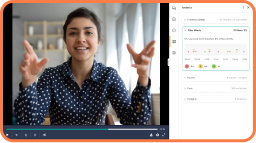Dr. Ray Francis:
Okay, so what do we know is working well? A number of different things that are working is we are using existing effective instructional practices. What we’re saying is that good teachers are good teachers, and this helps them be better. Annotating videos helps them to improve teaching teachers and working with the growth and mentoring of new professions. It helps our new teachers move along. It works with expanding clinical and experiential opportunities because we are doing more, not with less, but we are simply doing more related to clinical and experiential opportunities. Our students are in the field more. Our observations of students are greater, their feedback is more targeted, and they are the kind of experiences that are helping them grow. Through not only that idea of, well, I’ve got to video record and upload my video for Dr. Ray.
However, now I’ve also got to go in and see other people teaching and provide them with feedback and interact, and all of a sudden we have moved from an activity to an experience where it’s interactive, although, perhaps not in a synchronous manner. It is interactive in an asynchronous style kind of a situation. You see, we are also promoting reflection and processing learning as we go, and we’re building collaborative, asynchronous and synchronous activities.




